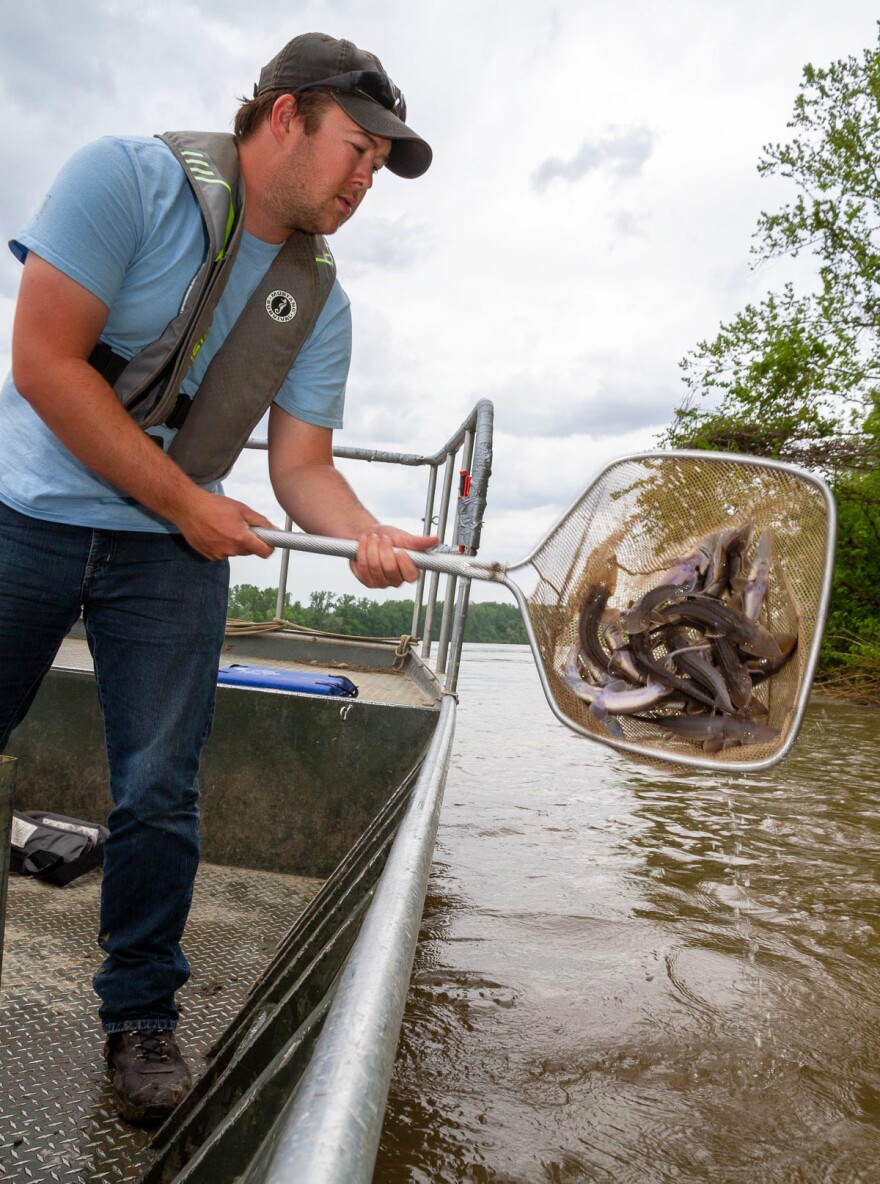Tim Schroeder is a little bleary-eyed.
He left South Dakota before sunrise and drove 10 hours straight to Missouri — with a few hundred endangered fish in the back of his pickup truck.
Schroeder, who works for the U.S. Fish and Wildlife Service, was tasked with delivering a load of pallid sturgeon to biologists in St. Charles. It’s part of a long-running partnership between federal scientists and the Missouri Department of Conservation to jumpstart recovery of the endangered fish species, which was once common in the Missouri and lower Mississippi rivers.
“They’re an ancient dinosaur-lookin’ creature with a triangle nose,” Schroeder said, gently cupping the fish in his hand.
He flips it over to reveal a silvery, translucent underbelly and points out a recent meal winding through its digestive tract.
The pallid sturgeon are about a year old and still relatively small — about 10 inches long — but they can grow up to six feet long and weigh about 100 pounds.
It’s one of eight sturgeon species in North America, seven of which are listed as threatened or endangered.
One of the big threats, said MDC fisheries management biologist Sarah Peper, is ongoing habitat loss.

Pallid sturgeon do best in slow-moving, shallow stretches of water, which are becoming increasingly rare on the Missouri River.
“These are fish that are as old as the dinosaurs,” Peper said. “None of their evolution took place in a river that looks like this, that’s swift and narrow and deep. Their Missouri River was wide and shallow with shifting sandbars and floodplains accessible in the spring floods.”
Damming and dredging in recent decades have dramatically altered the riverscape and blocked spawning routes, further contributing to declining sturgeon populations.
The U.S. Fish and Wildlife Service added the pallid sturgeon to the endangered species list in 1990. Four years later, MDC began releasing hatchery-raised pallid sturgeon into the Missouri River, with the goal of keeping the species from going extinct.

Under threatening skies, Peper and MDC fisheries technician John Winter carefully transfer more than 200 pallid sturgeon into a temperature-controlled tank on a boat.
They shove off from shore at Blanchette Landing in St. Charles and carefully pilot around fallen branches in the flood-swollen Missouri River.
“[The fish] have never been in a river before,” Peper said. “Especially with the river at this flood stage, you don’t want to throw them out into the main channel with the really swift current.”
Peper kills the motor, as Winter transfers several wriggling sturgeon into the river. With a little luck, some will survive to reproduce.
For Peper, it’s a small step toward conserving a species that was here long before us.
“They’re such an ancient fish,” she said. “You think about all the changes that this fish has gone through in millions and millions of years, and now it's going to die out if we don’t do something.”
Follow Shahla on Twitter: @shahlafarzan
Send questions and comments about this story to feedback@stlpublicradio.org


